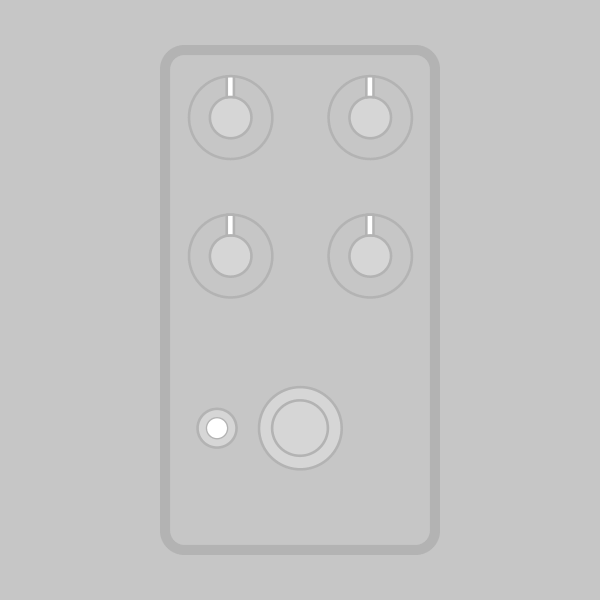
The Quadratron Twin Phaser is based on the Lovetone Doppelganger, a four-stage optical phaser first released in 1995.
As with most Lovetone pedals, it’s a traditional topology at its core, but with a huge twist. In this case, each of the four optical phase stages have different filter frequencies, with each stage having a capacitor twice as large as the previous stage. Each pair of stages has its own depth (intensity) control, called Low Frequency Span and High Frequency Span, and each pair of stages can be controlled by a single LFO, separate LFOs, or a single LFO with each pair out of phase with the other (i.e. when stages 1 and 2 are off, stage 3 and 4 are on). Each pair has its own rate/depth LED, so throughout each of the modes there is always a visual representation showing how the signal is being modulated.
The Doppelganger was updated in 1999 with three new features: a Dry Out jack, allowing for stereo operation when combined with the wet signal in the other output; a Square Wave toggle to give the first LFO a “chop” or on/off effect; and a Slow toggle that modifies the first LFO’s range so the slow speeds are even slower. Both of these features are backwards-compatible, so with Square and Slow turned off, it’s identical to the V1 circuit.
The Quadratron is based on this second version of the Doppelganger, but with a few tweaks to the bypass modes to correct some of what could be considered design flaws in the original unit. You’ll find more on this in the pages that follow if you’re curious. The signal path is unchanged, the only differences are in the bypass configurations.
Special thanks to Ian (LaceSensor / Gigahearts FX), the DIY community’s resident Lovetone expert, for help verifying the Quadratron prototype against an original Doppelganger for accuracy.
The Quadratron has the following controls.